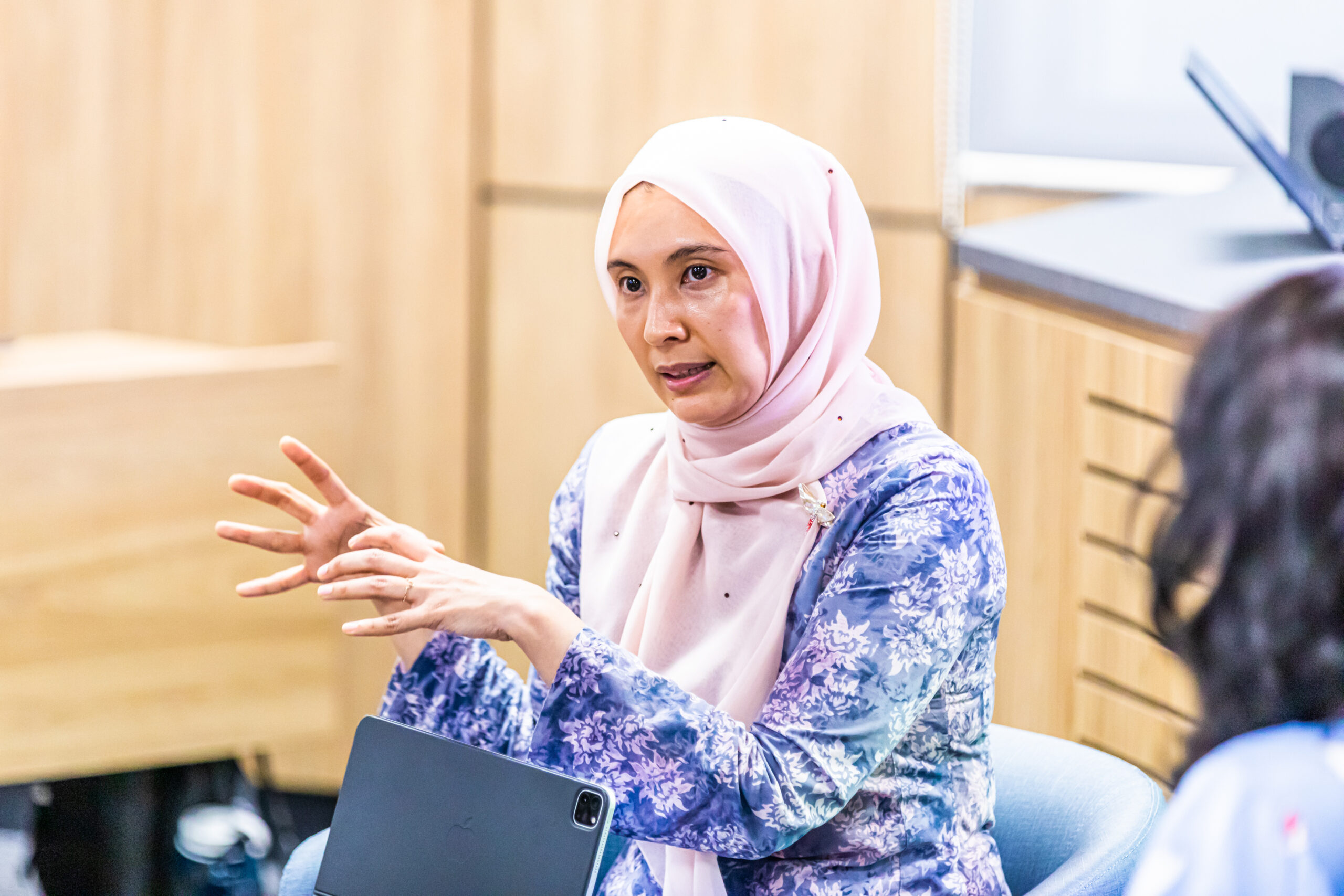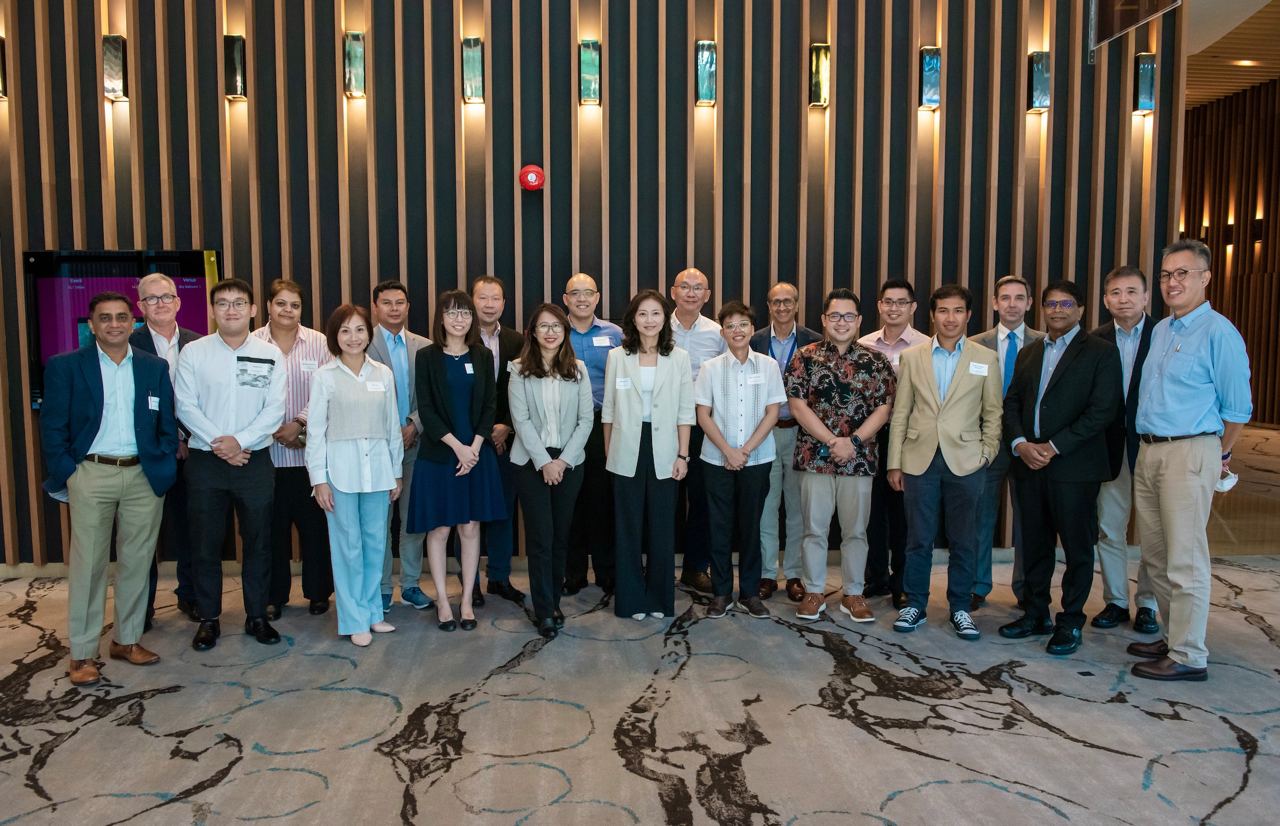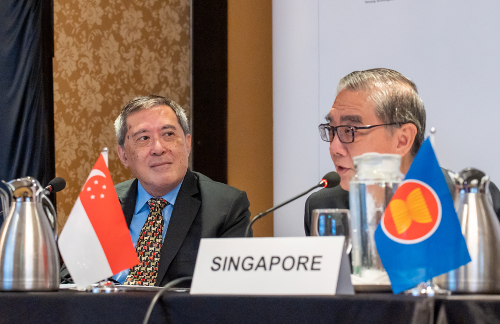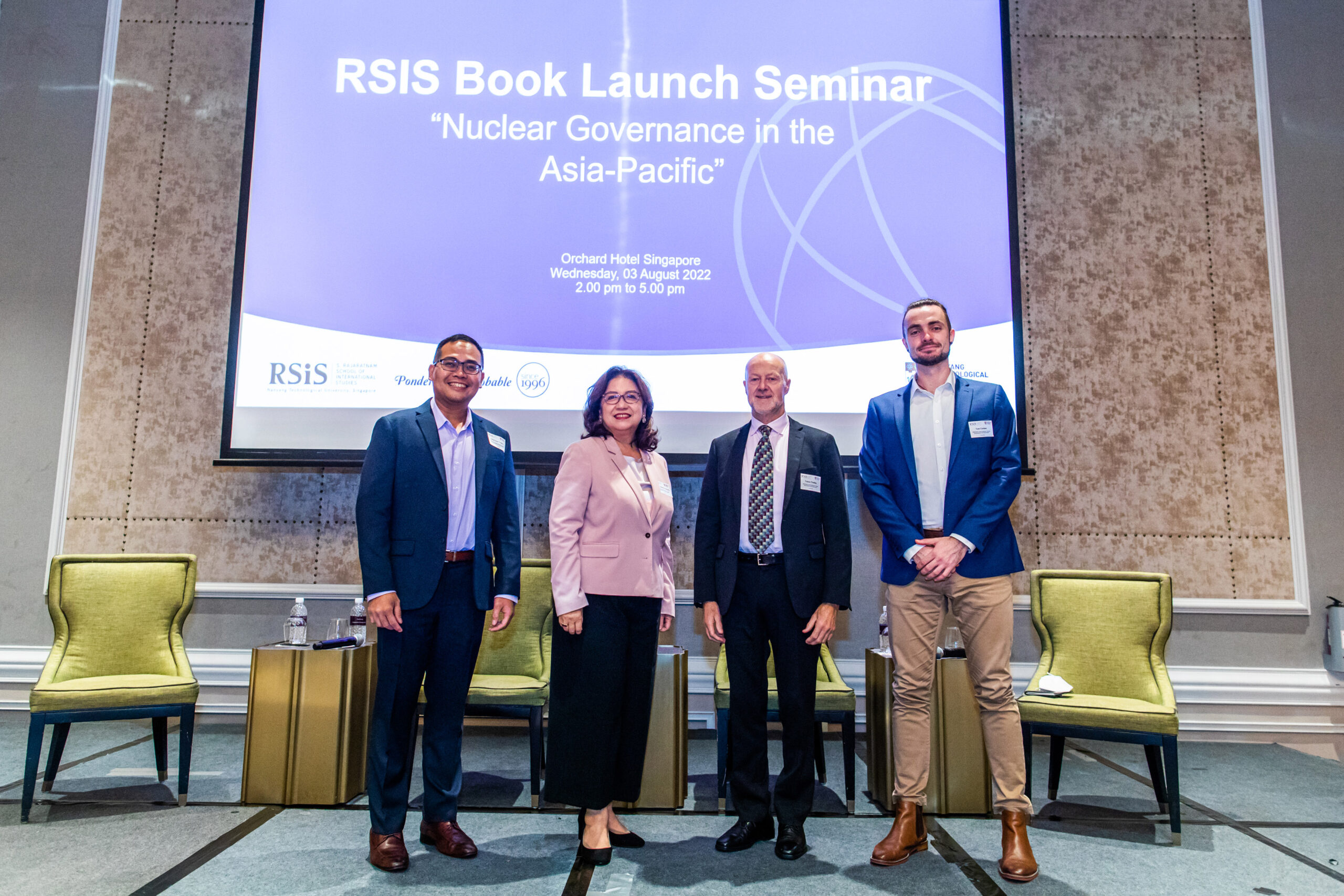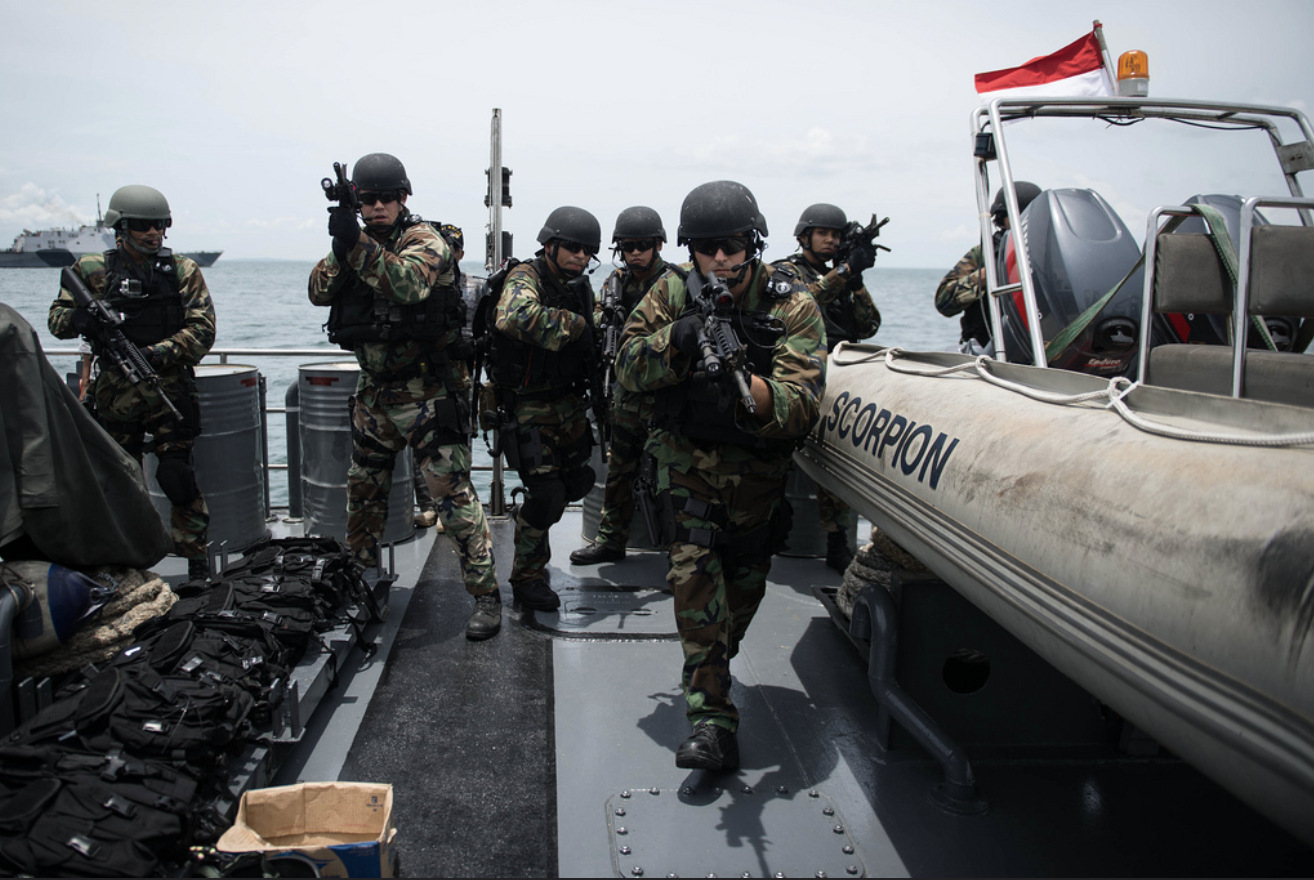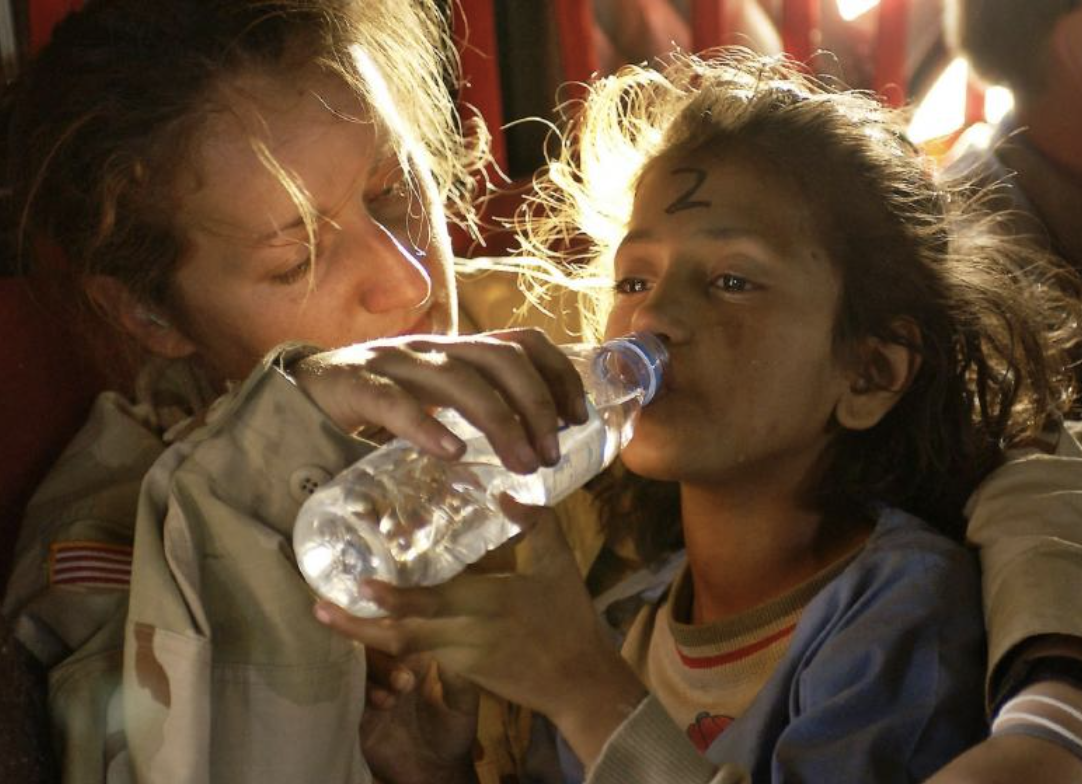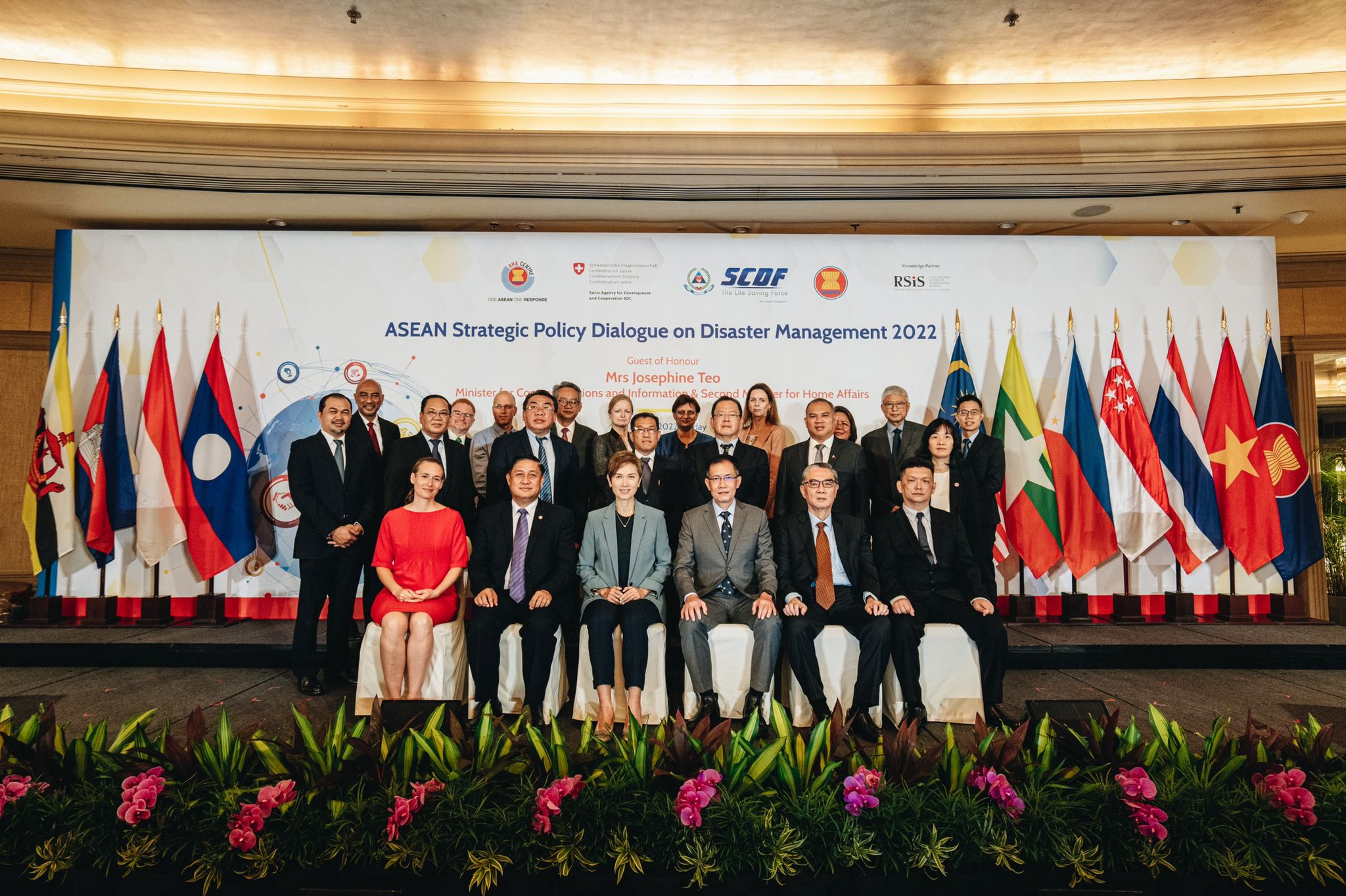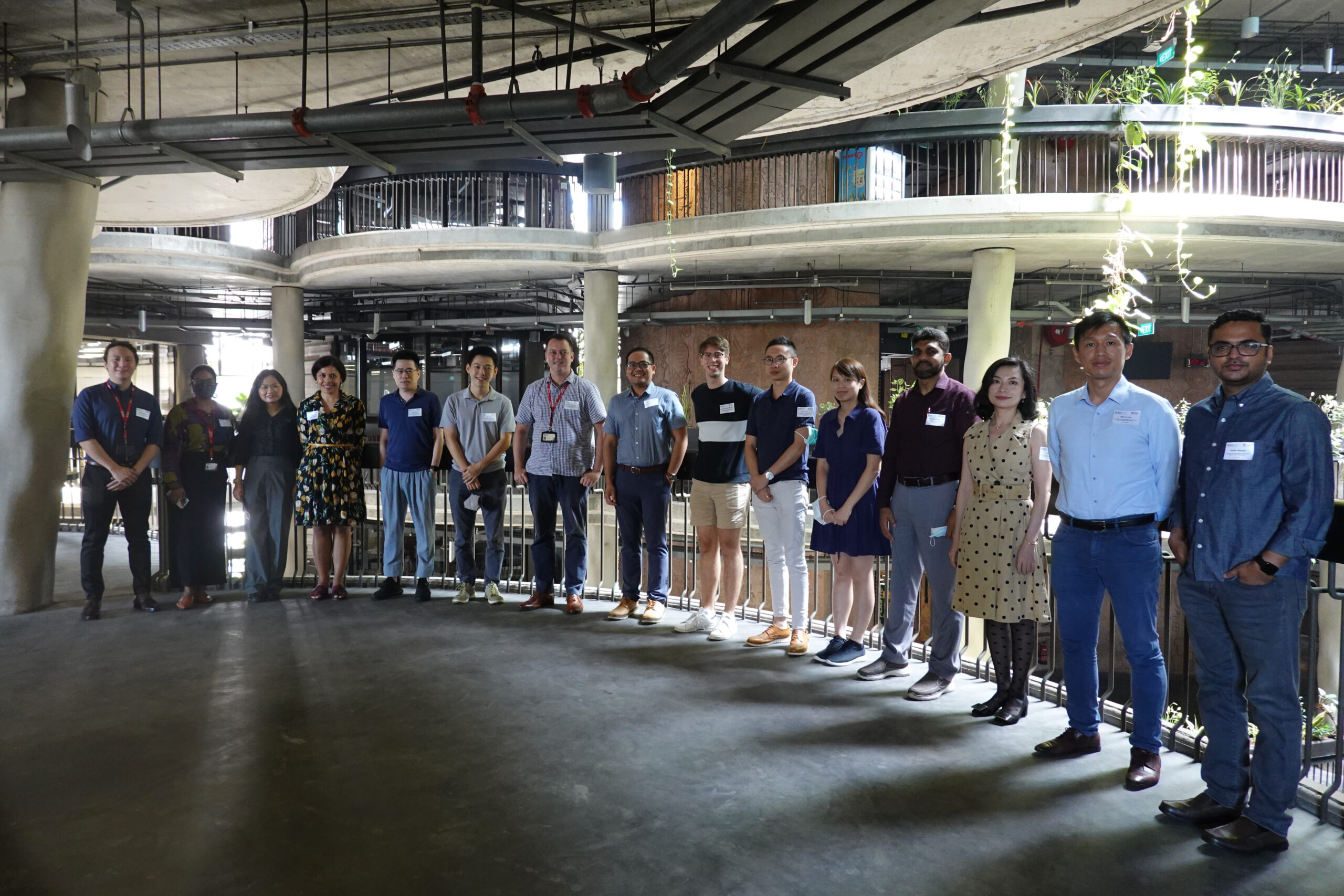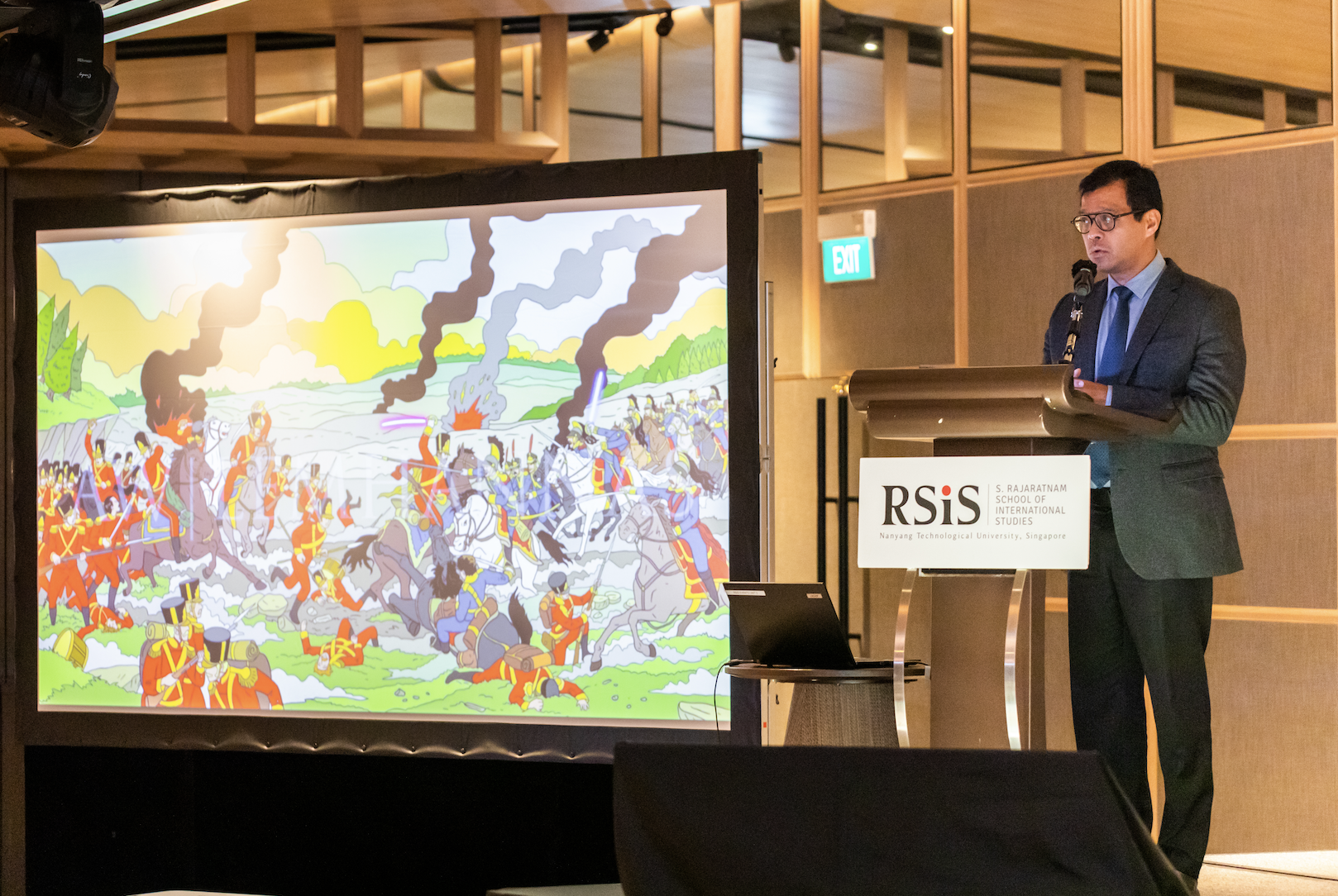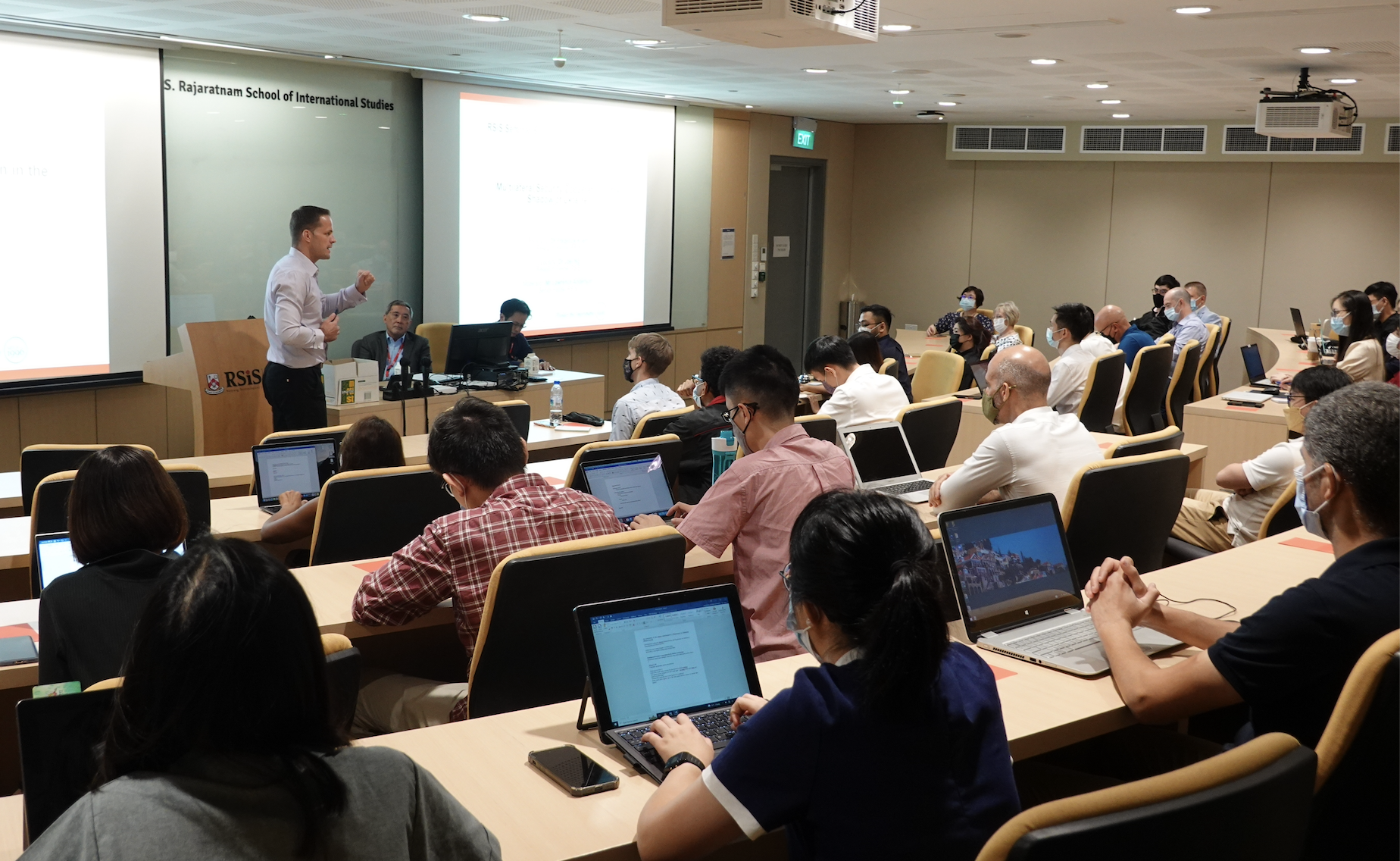
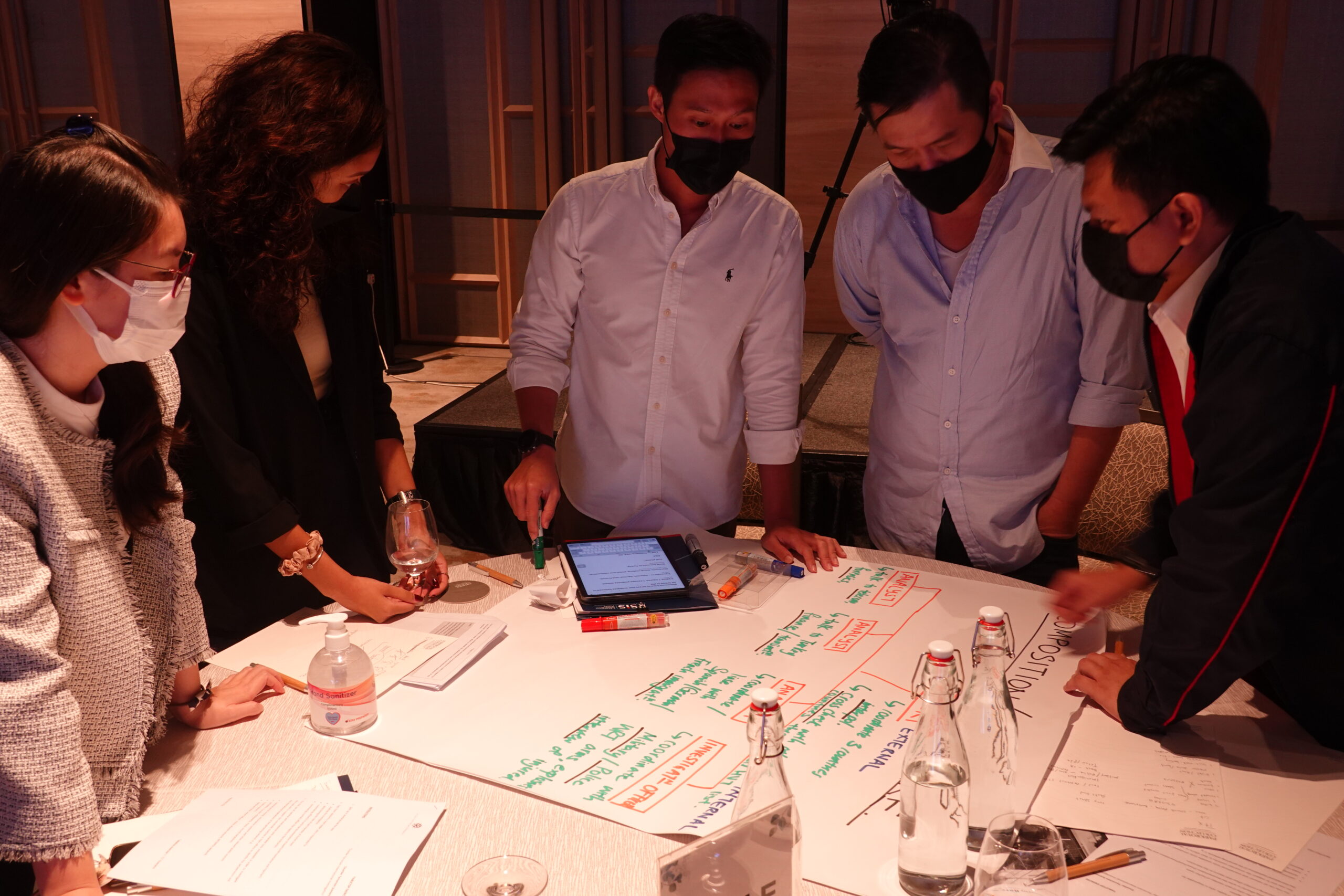
The International Centre for Political Violence and Terrorism Research (ICPVTR) hosted its 14th Terrorism Analyst Training Course (TATC) from 25 to 29 July 2022 at the PARKROYAL COLLECTION Marina Bay, Singapore. The principal capacity-building programme of ICPVTR, TATC aims to provide the latest analyses on terrorism and radicalism trends by academics and senior field practitioners. TATC is also a networking platform for counter-terrorism researchers and analysts, and law enforcement officials.
TATC 2022 was delivered via online and in-person presentations to 45 Singapore-based participants and 11 online participants who came from diverse backgrounds comprising law enforcement, security agencies as well as the private sector. The 30 specialist speakers involved were a mix of academics and practitioners from around the world including Europe, the United States, South Asia, Southeast Asia, and Australia. In his opening address, Ambassador Ong Keng Yong, Executive Deputy Chairman, RSIS, elaborated on this year’s theme, “The Evolving Terrorism Landscape”, and highlighted that the threats that were previously deemed secondary such as far-right extremism are beginning to take centre stage and these emerging trends have led to the evolution of terrorism.
Over the week, the specialist speakers provided insights into country-specific developments in Southeast Asia, South Asia, the Middle East, and Europe as well as emerging strains of radicalism such as the far-right phenomenon comprising white supremacism and Buddhist and Hindu extremism. Participants also learnt about threats and developments from terrorism financing, emerging technologies, and the role of family networks and women in terrorism. Challenges related to terrorist rehabilitation and reintegration into mainstream society, and lessons learnt from whole-of-society responses, were also discussed. A key highlight for participants was being actively engaged in a half-day table-top exercise (TTX) which provided them insights into investigation techniques involved in a terrorism case. For the first time, ICPVTR also conducted a virtual TTX programme – a simulation activity – for online participants to engage them in threat assessment processes and related discussions.
Overall, most speakers concluded that the terrorism threat stemming from Islamist extremism has declined globally and regionally. One reason for this was the COVID-19 pandemic that had hampered cross-border and local travel resulting from the lockdowns. Another reason was counter-terrorism operations that have degraded terrorist groups. Having said that, while the near-term terrorist threat appears to have decreased, the easing of border restrictions may cause a resurgence in the near future.
In the radical Islamist threat landscape, the main players remain Al-Qaeda (AQ) and the Islamic State (IS). Both have remained resilient despite operations against them and adopted a decentralised structure moving into new theatres of conflict whilst capitalising on states with weak governance and instability. Looking at Southeast Asia, the speakers noted that pro-AQ and pro-IS affiliates such as Jemaah Islamiyah and Jemaah Ansharut Daulah in Indonesia, and Dawlah Islamiyah in the Philippines, remain a significant threat. Operationally, the threat from jihadist terrorism has evolved from top-down, centralised plots into smaller-scale plots carried out by decentralised cells and lone actors, which are harder to detect.
Another key point of discussion was the situation in Afghanistan one year after the Taliban takeover. Contrary to what some analysts and media outlets had predicted, the takeover has failed to cause substantial impact outside South Asia. There has been no evidence of foreign fighters making their way into Afghanistan in large numbers. However, the Taliban have maintained a relationship with AQ and the Pakistani Taliban, which is worrisome. As an organisation, the Taliban is internally divided and grappling to contain sporadic attacks by their biggest enemy, the Islamic State Khorasan Province (ISKP). They have struggled to consolidate power in the country and gain widespread diplomatic recognition. As a result, the situation in Afghanistan remains volatile.
Separately, the threat from the far-right has been growing in recent times. It is one that is persistent and widespread particularly in the West, but at present has no global equivalence to transnational jihadist groups such as AQ or IS. The far-right is not a monolithic movement and comprises an amalgamation of various ideologies such as anti-Semitism, inceldom and anti-governmentism. Currently, the far-right movement is energised, finding itself growing within polarised pockets of society but at the same time is disorganised, lacks space and territory. The threat of one-off mass casualty attacks is always a possibility and one that must be monitored closely. As for the far-right threat from Buddhist and Hindu extremism, these seem to be more currently focused on amassing political power.
Another focal point was that of emerging technologies. These include Chemical, Biological, Radiological and Nuclear (CBRN) weapons, unmanned aerial vehicles (UAVs), and social media. CBRN weapons have been a global cause of concern especially after evidence emerged in the early 2000s of terrorist groups like AQ attempting to acquire and develop them. Advancement in technologies has reduced the threshold of capability to develop and use such weapons in attacks. Whilst developing a workable radiological or nuclear weapon remains difficult, the biggest threat would come from dual-use chemicals and plant-based toxins used in limited casualty attacks.
The use of UAVs, in particular commercial drones, has revolutionised the terror threat landscape. UAVs, which were once exclusive to state military arsenals have now found its way to several terrorist groups due to the commercialisation of the technology. Many groups such as IS have weaponised commercial drones and have used it for surveillance, to produce propaganda videos, and transport light weapons. One other form of technology that was highlighted was the use of social media and encrypted communication platforms by terrorist groups. This has led to an increase in radicalisation among youth and added an extra layer of complexity with regards to counter-terrorism and counter-terrorist financing operations by government agencies.
Overall, it was emphasised that a lull in global terrorist incidents does not equate to the end of terrorism. The threat is ever-evolving with added complexities associated with the decentralisation and operational innovations of terror groups, the impact of great power competition and political instabilities, as well as the resort to emerging technologies. This calls for robust global counter-terrorism cooperation among governments and the need for holistic, multi-disciplinary approaches to mitigate the threat from terrorism.





